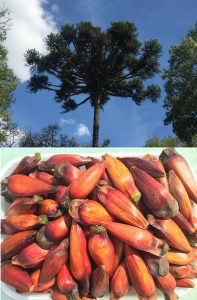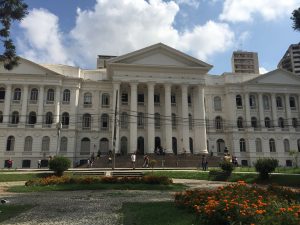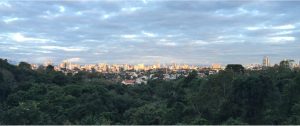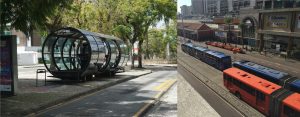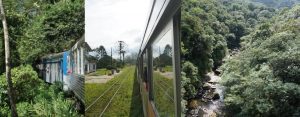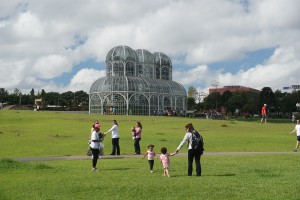Go straght to my video blog: https://vimeo.com/169554818
For anyone staying in Curitiba for more than a few days a day trip to Morretes or Paranaguá is a must. The trains are old, noisy and uncomfortable and the journey to Morretes takes three hours to cover just over 60 kms, The 110 km journey to Paranagua takes another hour but is only available on Sundays. The train ride is one of the most exciting and scenic travel routes in Brazil. It winds its way across the mountains of Serra do Mar, Brazil’s coastal range, in the southern state of Paraná. There are at least four different ticket prices from the very basic, through to having a Portuguese speaking guide to having snacks, free soft drinks and beer and a bilingual Portuguese English guide. There is also a luxury train where the seats are all sofas and armchairs and dinner can be booked. There are many companies that offer packages on the Serra Verde Express but there is no need to book one of these. It is easy to book your own tickets at the railway station opposite the Municipal Market, behind the Curitiba main bus terminal the Rodoviária de Curitiba. If planning a weekend trip book at least two days in advance. You can check out the fares on the website www.serraverdeexpress.com.br . I booked the ticket which included free beer but as the train departed at 8.15 in the morning I wasn’t sure if it was going to be a good idea. However, my journey was extended by an hour as before we had left the environs of Curitiba we had an emergency stop because a child of six years old had opened the sliding window and either jumped or fallen out, things like this can still happen in Brazil. Luckily the little boy bounced and after being checked out by paramedics was allowed to continue the journey to Morretes. After this incident it was time for a beer and I sat back to enjoy the journey down the mountain from the 935m elevation to the nearly sea level of Morretes.
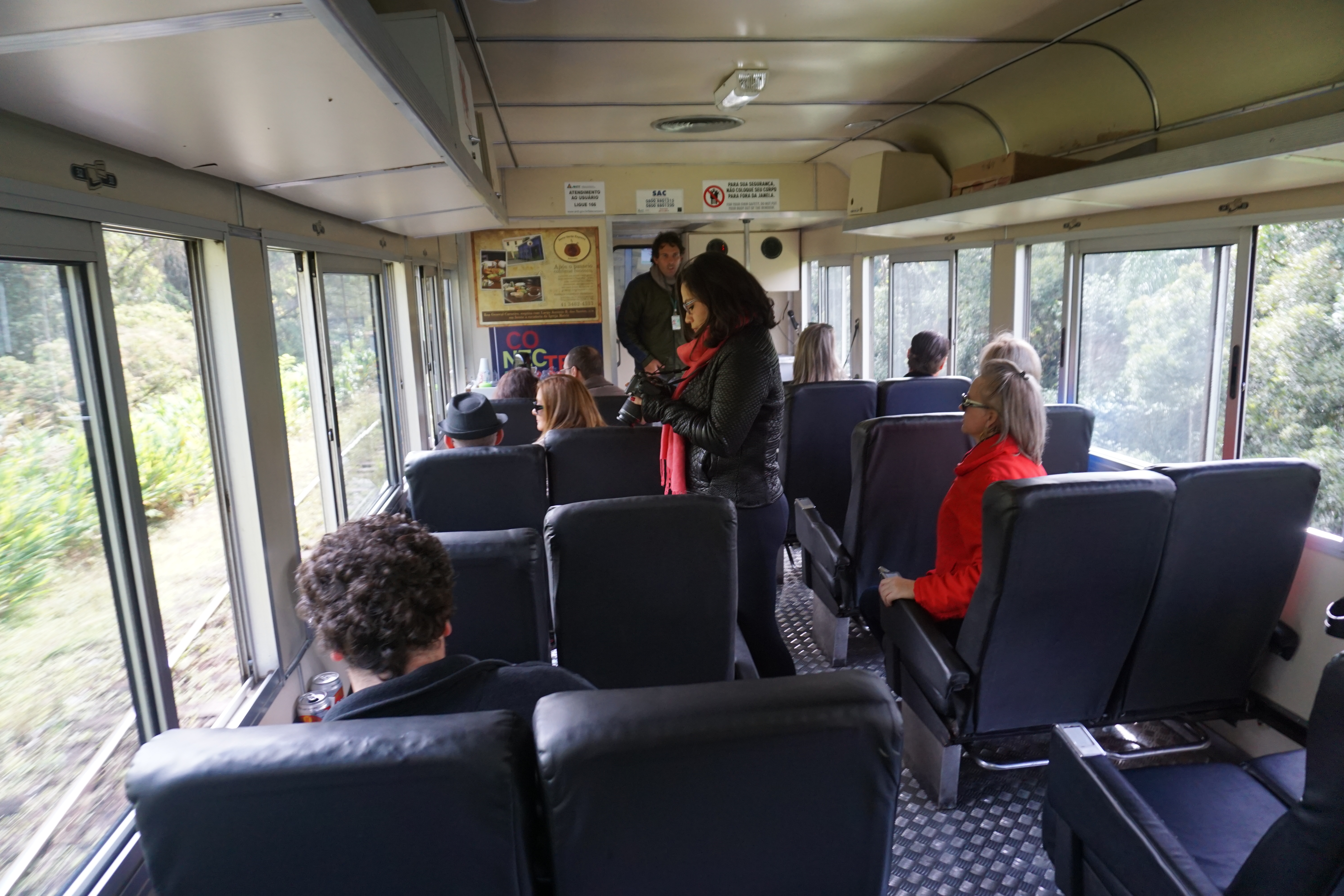
The journey between Curitiba and the port city of Paranaguá via Morretes, owes its appeal to the engineering feats accomplished in the construction of the railway as well as to the natural beauty and cultural attractions along its path. The journey takes you through 14 tunnels and across 30 bridges. The ride’s engineering highlights are the São João Bridge, which hugs the mountains at a towering 55 metres high and the Viaduto do Carvalho, which sits on five pillars of masonry on a rock slope.
.
The construction of the railway was ridden with tragedy. Of the more than 9,000 workers hired for the job, over 50% died. When the plan to build the Serra Verde Express came up in the 1860s, it was the most complex work of engineering in Brazil, considered impossible by European professionals at the time. Work started in 1880 and finished five years later. The main reason for building the railway was the need to create a route for products from the southern states of Brazil to the ort of Paranaguá. Unlike other Brazilian railways, which were abandoned as Brazil made the decision to opt for road transportation, the Curitiba-Paranaguá railway continued largely due to its tourist appeal. However, today it is still a major export route for grains mainly soya and maize from the warehouses and silos in and around Curitiba to the rest of the world.
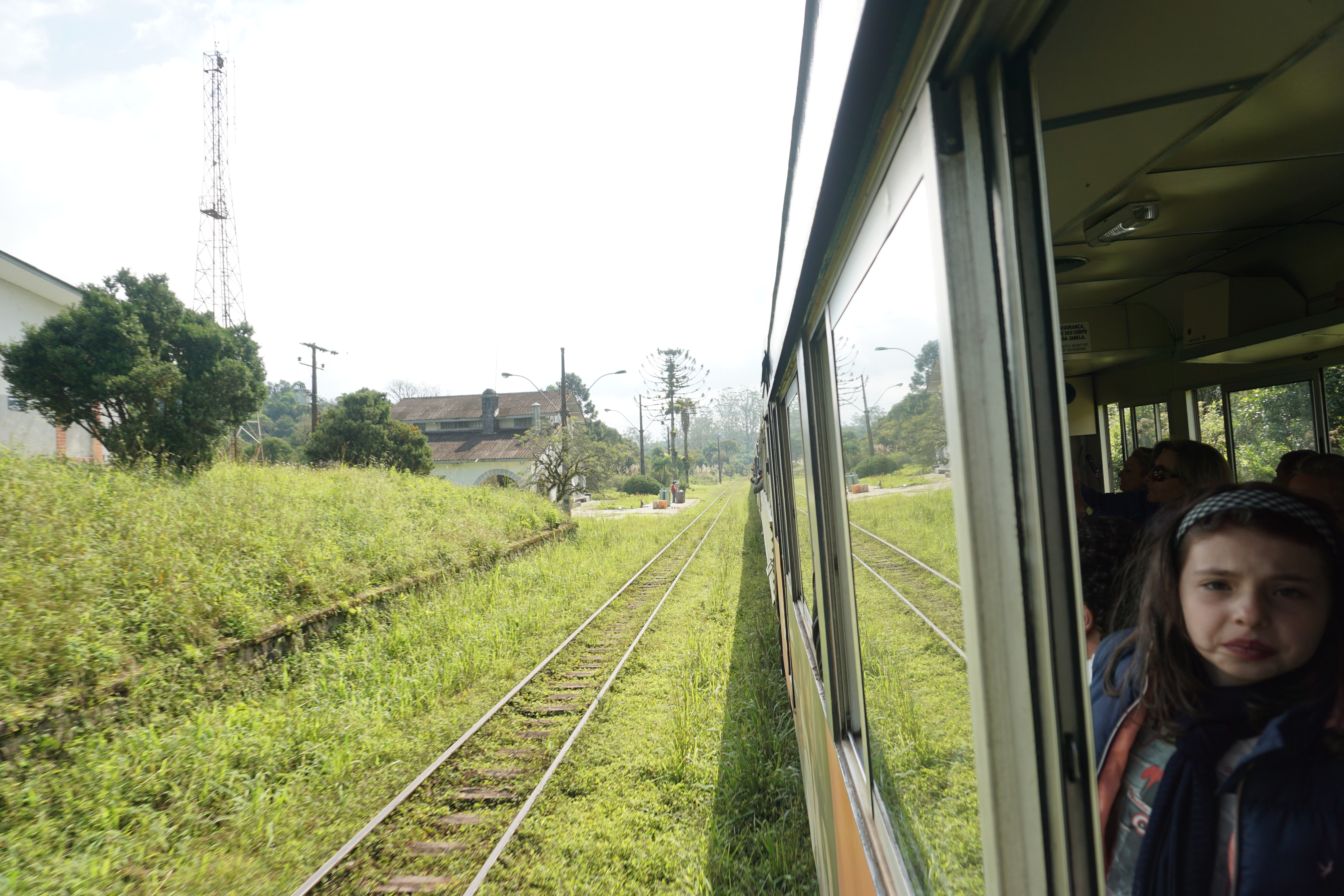
Our journey first took us through the grassland countryside with the ubiquitous Parana pine trees before entering our first tunnel and emerging into the Atlantic Rainforest, Biosphere Reserve with its very different fauna and flora including blue hydrangeas, bamboos, strap lilies and bromeliads in the trees. The Atlantic Rainforest is endangered, even more so than the Amazon Rainforest and the United Nations as well as several other organisations have sought to preserve this precious type of rainforest, less than 1% of the original area survives today. Over the past several hundred years, almost all of this type of rainforest has disappeared, and now is limited to the deep southern regions of Brazil.
Check out my video journal to see the fantastic countryside, mountain ranges, and feats of engineering that are still awe inspiring more than 130 years after construction. https://vimeo.com/169554818
On arrival in Morretes, which, by now was already lunchtime my travel companions and I chose a restaurant Villa Morretes that was not frequented by one of the many tourist groups. It was one of the best decisions of the day. For lunch we all ate the traditional slow cooked beef stew, barreado, served with rice and farofa (manioc flour), The stew was great but the addition of other than a small amount of farofa made the stew a bit gluey. One of the traditions after mixing the barreado with the farofa is to turn your full plate upside down above your head and watch in amazement as he whole plate of food sticks stubbornly to itself. Definitely a rib sticking meal, but definitely worth a try. Morretes is also well known for its cachaça which is kept for at least seven years in barrels before bottling, The restaurant Villa Morretes offers free tastings of 2 or 3 different types.

After lunch we made a stroll through the town with its quaint architecture and street market, selling local crafts, honey, sweets and many different flavours of cachaça.

When planning your day trip you have to decide whether to return by train or coach. I recommend returning by coach for two reasons, it is much quicker and much cheaper. However, you need to reserve your return journey before departure from Curitiba. You can do this on line. Check out the timetable at:
http://www.buscaonibus.com.br/en/timetable/morretes/curitiba?
And reserve your seat at: www.viacaograciosa.com.br
If this written blog has wetted your appetite watch my video to see the fantastic countryside, mountain ranges, and feats of engineering that are still awe inspiring more than 130 years after construction. https://vimeo.com/169554818


